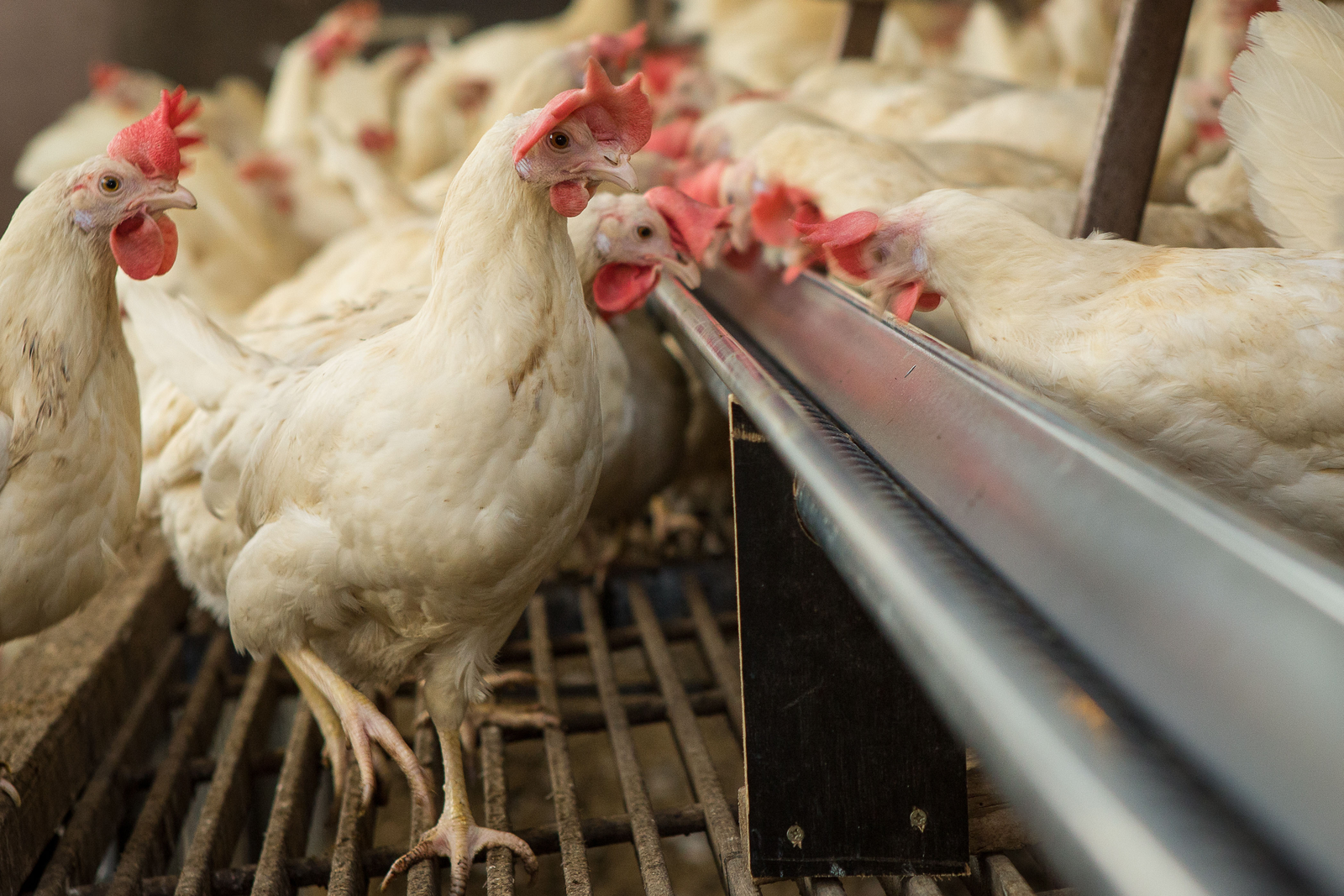Effects of various selenium sources in layers

The effects of various sources of selenium were tested on their effect on egg freshness and apparent bioavailability of selenium. This was done by measuring selenium levels in the muscle and the different components of the egg (whole egg, albumen, yolk).
In a study, performed by Lallemand Animal Nutrition, 96 ISA Brown laying hens were divided into four groups each receiving the same feed supplemented with 0.2 ppm of selenium in the form of sodium selenite (SS), selenized yeast* or two forms of synthetic selenomethionine (SM1 and SM2). Selenium levels were measured in the muscle on D55 and in the whole egg, albumen and yolk on D34. The Haugh unit score, a measure of egg freshness, was obtained in eggs sampled on D55 and stored for 10 days at 24°C. The sodium selenite (SS) batch was used as a positive control.
Effect on Se levels in muscle
The selenized yeast product, used in this study, guarantees 100% organic selenium, 63% in the form of selenomethionine (SeMet). According to tests performed by the Laboratory of Bioinorganic Analytical and Environmental Chemistry (LCABIE), the remaining proportion of selenium is present in other forms of selenized amino acids such as selenocysteine (SeCyst). The synthetic forms SM1 and SM2 guarantee 100% organic selenium in the form of SeMet. The measurements in muscle (Figure 1) showed a significant increase in selenium levels for the three batches supplemented with organic selenium (selenized yeast, SM1 & SM2) compared to the SS batch. The statistically greater effect (p<0.001) for the selenized yeast and sm1 batches reflects better uptake and bioavailability of selenium in the muscle with these two sources of selenium. if semet is considered as the only “active material” supplying selenium and these results are weighted to reflect the semet content supplied by the three sources of organic selenium (63% for selenized yeast, 100% for sm1 and sm2), selenized yeast to be the source of semet with the highest deposition of selenium in the muscle (>Figure 2).</0.001)>
Transfer rate into eggs
In whole egg on D34, increased levels of selenium (in µg of DM) were measured in each batch: SS 109.9µg, SM2 159.4µg, SM1 174.5µg and selenized yeast 198.8µg. Measuring the transfer rates (Ratio (in %) between the quantity of selenium supplied in animal feed and the quantity of selenium ingested by the animal) confirmed that the hens supplemented with the selenized yeast had a higher transfer rate of selenium into the egg than those that received the same supplementation in the form of synthetic SeMet (SM1, SM2) or sodium selenite (SS). In the selenized yeast batch compared to the SS batch, the selenium transfer rate was increased by 95% in the whole egg, 133% in the albumen and 27% in the yolk (Figure 3).
Figure 3 – Transfer rates of Se on D34 in whole egg, albumen and yolk.
Improved egg freshness
The Haugh unit score measures the deterioration of protein quality in egg albumen. It is used to assess the freshness of the egg and hence its preservation ability. All eggs laid by the hens supplemented with organic selenium (selenized yeast, SM1, SM2) obtained higher mean Haugh scores than the eggs from the SS batch (Table 1). However, the eggs laid by the selenized yeast batch also showed more high scores: 36% of the selenized yeast batch eggs were in the category over 45 HU, compared to 30% of SM1 batch eggs and 18% of SM2 batch eggs. Finally, according to the egg water loss measurements for the four batches, the eggs from the selenized yeast batch had the smallest water losses. This series of tests confirms an improvement in egg freshness that is higher for the selenized yeast batch.
In laying hens: a better uptake and deposition of selenium, higher transfer rate
Laying hens were used here as a model to assess the effectiveness of different sources of selenium available on the market. The greater effectiveness of selenized yeast is demonstrated here by: a better uptake and deposition of selenium in muscle, a higher transfer rate into the different components of the egg and an improvement in egg preservation ability. The selenized yeast product tested here reflects a greater bioavailability of the forms of organic selenium contained in selenized yeast. This is explained partly by the presence of different forms of organic selenium (both SeMet and SeCys) in the product and by the fact that selenium metabolism involves other selenomolecules in addition to SeMet. Furthermore, this selenized yeast product is approved under EU legislation on additives and substances permitted for use in animal feed in organic farming.
* ALKOSEL® R397. References are available on request.
Source: All About Feed magazine 24.3.












